
As its title suggests, the male gaze is strong in Wayne Wang’s While the Women Are Sleeping, a moody, mysterious meditation on voyeurism, obsession and the painful act of creating. A cross between Nabokov’s Lolita and François Ozon’s Swimming Pool, it is both hypnotizing and unnerving, with an ending that invites a range of interpretations.
The Hong Kong-born American director, acclaimed for such films as Smoke, Joy Luck Club and Maid in Manhattan, marks his first-ever Japanese production with an adaptation of the eponymous short story by Spanish novelist Javier Marías. Working with producer Yukie Kito, his collaborator on two previous titles, Wang attracted a stellar cast to the project, including Hidetoshi Nishijima and “Beat” Takeshi Kitano, playing his first lead role for another director in 12 years.
Just 10 days after the world premiere at the Berlin Film Festival, Kito brought the three non-male stars of the film to FCCJ, and presided over a post-screening Q&A session that she dubbed While the Women Are Talking. The session was in English, allowing ample time for each of the four to respond to a range of questions.
Highlights of the session are below, but first, a brief recap of the story:
Novelist Kenji Shimizu (Nishijima) has a bad case of writer’s block. His wife, Aya (Oyamada) is a successful editor who sympathizes, but she’s also given him an ultimatum: write or get a real job. On a one-week vacation together in Izu, Kenji hangs out in their beautiful seaside hotel while Aya assists a client staying nearby. At the pool on Day 1, Kenji’s attention is drawn to a beefy older man, Sahara (Takeshi), and a comely young lass, Miki (Kutsuna), obviously intimate, but surely not father and daughter.
Kenji can’t sleep; neither can Sahara. Late the next night, they meet by chance at the pool, and Sahara admits he’s been shooting Miki as she sleeps for the past 10 years — and then, overwriting the footage. “I want to have a record of her last day,” he says. But he’s certain that she will betray him, and “I’d rather kill her than let my love die!”
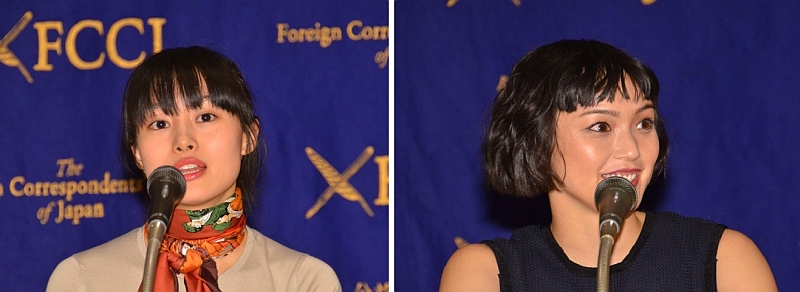

Clockwise from top left: Kutsuna, Oyamada, Watanabe, Kito (©Mance Thompson)
Growing evermore intrigued, Kenji finds himself following the couple into town, then peeping into their room and by Day 4, actually entering it. The odd owner of a rundown restaurant where they tryst (Lily Franky) hints about dark dealings in Sahara and Miki’s past, feeding Kenji’s obsession further. Then one night, Miki comes to him, and shortly after, disappears. Aya has apparently taken up with her client, or perhaps she’s succumbing to Sahara’s seductions. By Day 5, the only thing that is clear is that either Kenji is losing his mind, or the world around him has gone mad.
Question: How did the project come about? Did Wayne read the story, acquire the rights and come to you with the idea of relocating the story to Japan?
Yukie Kito: First he was thinking of doing the film as written, which is, set in Spain and written in English. But as he was developing it, he decided that he wanted to make a film in Asia. So he came to me and I said, “If there’s any Japanese element, I could be helpful. Otherwise, there’s no point in having me.” And he said he wanted to make a film with one Japanese couple. We started that way, and then he said he wanted to make it completely in Japan. So I said, “There’s only one actor we can go to: Beat Takeshi.” Knowing the chances were quite slim, we tried, it worked and here we are.
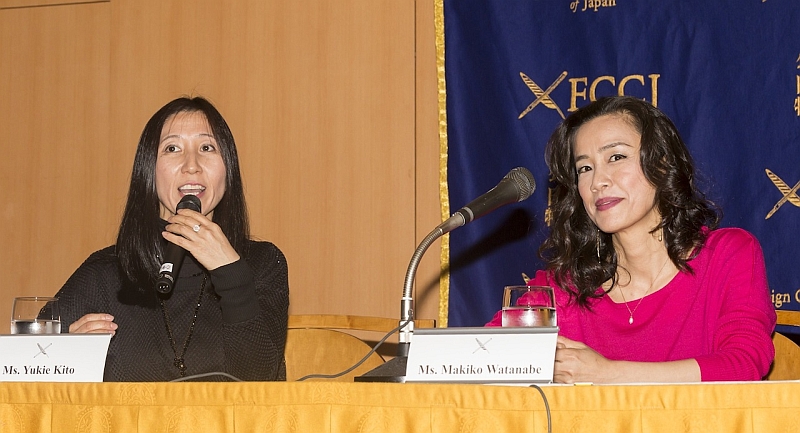
©Mance Thompson
Q: Great movie. What actually happened, and is that girl dead? I’d just like some clarification. We have a missing person, presumed dead. I ’d like to know who it is.
Shioli Kutsuna (the missing girl): It may be disappointing, but there are no right answers to how you read this film. As Wayne was continually saying, he did not want to push people to read the film in only one way. I think how you read it depends on you.
Q: So are you dead, or not?
Kutsuna: Personally, I don’t even think Sahara and Miki exist. At the time, I didn’t think that… but I don’t want to push my personal opinion on you.
Kito: As Wayne and Takeshi-san have been saying in interviews, there are multiple ways to interpret this film. When I was making the film, I thought she was dead. Now I don’t think so.
Sayuri Oyamada (the novelist’s wife): My personal opinion is that she’s still alive. But it’s up to the audience.
Makiko Watanabe (the novelist’s wife’s friend, who works at the seaside hotel): I want to say that it’s up to your imagination. But as a hotel employee, I cannot divulge too much about our guests.
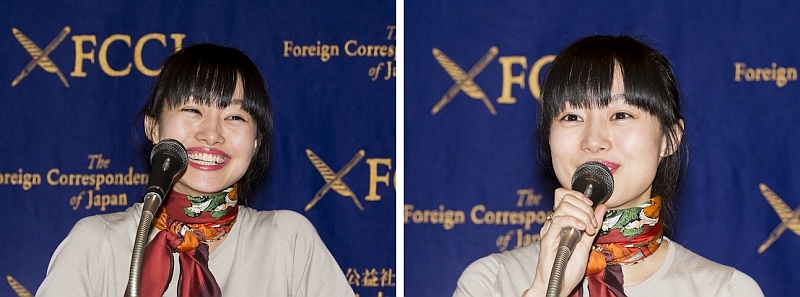
Kutsuna grew up in Australia, but started her career in Japan. ©Mance Thompson
Q: When it’s a film made by a Hong Kong-born American director, based on a short story by a Spanish writer, set in Japan, it begs the question: Do you think there’s anything in the story that resonates as Japanese, or is this a case of plonking a story down in Japan that doesn’t really fit?
Kito: When I started working on this project, it was completely Spanish. Screenwriter Mami Sunada changed it into Japanese. While we were going back and forth, I realized Wayne has real respect for Japan, not superficially, but emotionally. I think he really respected the writer. But I can’t see it objectively, to be honest. I wonder whether the actors felt the screenplay seemed a little foreign, or if it felt Japanese when they first read it?
Kutsuna: I didn’t think it felt too foreign. I heard that Wayne included specific things to make it feel more Japanese, like the scene where Sahara shaves the hair on the back of Miki’s neck. For Western cultures, that might not be sexy, but for Japanese, due to the geisha culture, it is.
Oyamada: I think it had a Japanese feeling. The Japanese actors and actresses understood the story, and even though the original is
Spanish, the script was in Japanese. Acting is always the same, coming from inside of us, from emotions.
Watanabe: I can’t compare the Japanese and Spanish scripts; I only saw the Japanese one, and I had to believe in it. The shooting location was Japan, the actors were Japanese. All those elements made it Japanese. If there are any Spanish elements, they come from human nature.
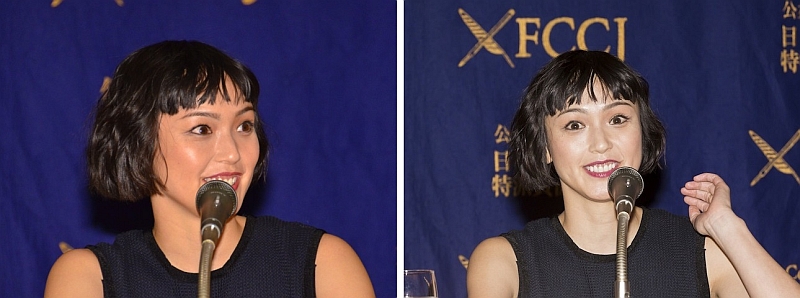
Oyamada has worked with Japan's leading auteurs, but is now based in New York. (right photo: ©Mance Thompson)
Q: How does a non-Japanese-speaking director get the proper line reading? Even if you hire the best actors, you can’t tell. How did it work? Tell me a little about Wayne Wang’s style.
Kutsuna: I was wondering how the communication between us would be. We were all able to do it smoothly. We all speak English, so I guess it was comfortable for him to be working with actors who understood English. Before I went to set, I asked Yukie-san what Wayne was looking for in a good take. She told me that he can sense takes that are good. He really communicates, and he pushes your creativity past your limits. He was very patient and very cooperative with the actors. Language wasn’t the most important tool for us to communicate.
Kito: Takeshi-san doesn’t speak English, but he understands it well. He’s as charming on set as you imagine, and he would say interesting things in English to make us laugh. As a producer, I had to sign off on language, while Wayne watched the emotions of the performance. If someone skipped a line, it was my job to catch that, so it was a collaboration.
Oyamada: I met Wayne for the first time in Los Angeles, and we talked about the script and my character a lot. Also, on the set, we talked about story and character. It had a really good effect on me. Because the Japanese film industry is often so rushed, that we can’t talk. I could talk a lot with him, and everyone knows he’s a great, great director, not a typical Hollywood director at all, so artistic. I really treasured this experience.
Watanabe: My scenes were short. I’m really envious that these two spent so much time with him. During the costume fitting, I was talking with him about my character. Even though my English isn’t so great, within 5 minutes, I thought, this will be fine. I’m always desperate to have this type of communication with my directors. But language isn’t as important as being able to agree on things. We had a lot of bilingual crew members, and everyone was working extra hard to bring Wayne’s vision to fruition. It was a really special set.
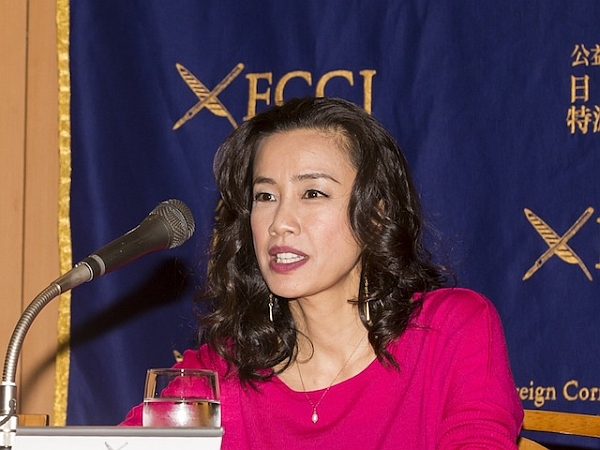
Veteran actress Watanabe has a devoted overseas fanbase. ©Mance Thompson
Q: Javier Marias is very knowledgeable about cinema, a famous and prominent film critic. He’s not particularly happy with previous adaptations of his work. Was he involved in the creation of the film, and did you get any feedback afterward?
Kito: He asked for a DVD, I sent it to him and it’s on the way. Actually, he wrote [the short story on which the film is based] 20 years ago, and I heard that he felt kind of detached from the material for a while. But when the film got into Berlin, he started to pay a little more attention and he asked for a DVD. So I was happy. Hopefully, he’ll like it.
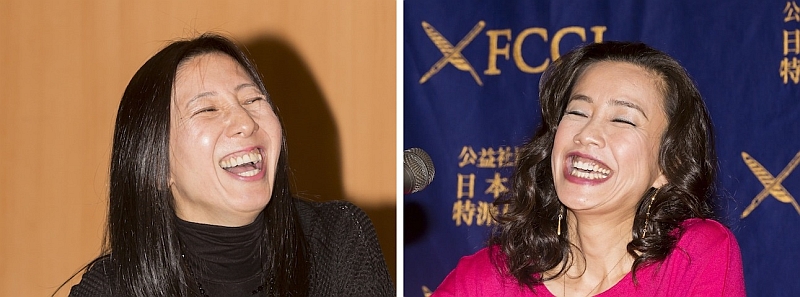
©Mance Thompson
Q: I was very impressed by the performances of all the cast members, they were great. It’s a powerful cast. How and why did you assemble them?
Kito: We were looking for new talent, and Wayne and I met so many young actresses. Then I heard that Shioli wanted to meet us, and I told him “She’s too experienced. I know she’s young, but we’re looking for new talent.” [Japanese-Australian Kutsuna has already won three newcomer awards, and appeared in many films.] But it was suggested that they meet for tea, and since she speaks English, I thought it would be good for Wayne to meet her. She came on her day off from a shoot in Wakayama, and I thought immediately, “Oh my god, she’s Miki.” And Wayne felt the same. We also met so many actresses for the part of Aya, and had a hard time. I knew Sayuri, and reached out to her in New York [where the actress has been based since 2010]. She said, “I’m going to LA next weekend,” and Wayne was going to be there, so they could meet. That’s how we cast her. I met Makiko in Hong Kong a few years ago, when she won Best Supporting Actress at the Asian Film Awards [for Capturing Dad], and I was looking for a chance to work with her. I went to her, begged her, and she said OK.
When Wayne was thinking of making the film into an Asian story with the younger couple being Japanese, I said, “I can think of only one actor for the part of Kenji: Hidetoshi Nishijima.” Wayne said, “Oh, let’s go with him!” I said, “You don’t know him! How can you just decide like that?” He said, “I know him from the film Cut.” So I introduced them and they completely hit it off. Nishijima-san even went to Hong Kong to spend some time with Wayne and they created the character of Kenji together. I started worrying about what would happen if I couldn’t raise financing. But fortunately, all the detailed conversation wasn’t wasted.
[As for Beat Takeshi], there was only one person we could think of who would make even Javier Marias happy. Takeshi-san is so respected in Europe, and Javier Marias said yes to him. So we went to Takeshi-san, thinking it wouldn’t happen. But miraculously, the timing and material were right.
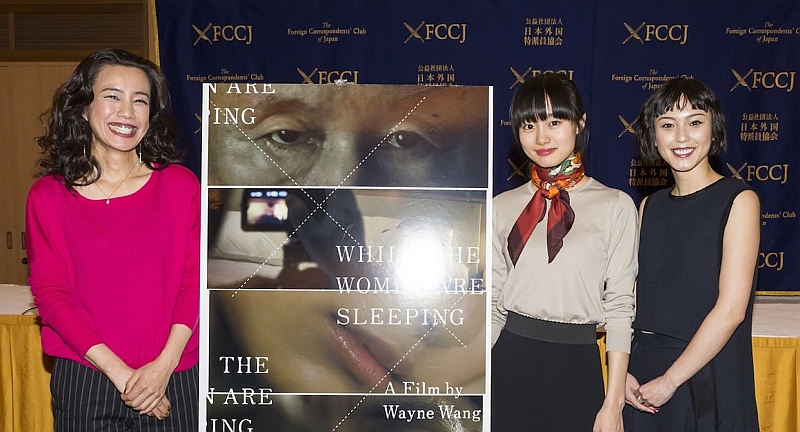
©Mance Thompson
Q: Congratulations on a great film. It’s the second time I’ve seen it, since I watched it in Berlin a few days ago. What was the biggest challenge for the actresses? Sexuality in Japanese cinema is often a taboo; was that a challenge for you?
Kutsuna: When I was having tea with Wayne, as Yukie-san mentioned, and I started thinking that I might have a chance to do the role, all I could think about was, “Wow, I need to lose weight.” [Sahara and Miki] are a very odd couple. Being Takeshi-san’s girlfriend, with our ages so far apart, I thought I had to have a good relationship with him and communicate as much as possible on set so that we appeared comfortable with each other. But Takeshi-san does not really speak much on set. The first scene we did together, which wasn’t actually in the final film, was a scene where we were trying to catch butterflies with these nets. It was a strange, unusual scene. We weren’t talking, but he was apparently catching a lot of bugs in his childhood, and he was very good at it. He caught a lot of butterflies. Afterward, I felt comfortable around him, and allowed him to take our scenes wherever they had to go. I built a relationship with Takeshi-san and felt confident, and in a way, kind of vulnerable, because Miki is at the stage where she wants her own freedom after being with this man who has locked her up in cages and taught her only his world.
Oyamada: As you know, I’m an actress, so I just do [explicit scenes] with passion. When I first met Wayne, we talked a lot about the sexuality, and he asked me whether I could get nude in front of the camera. So I said, “Okay.” But we talked a lot about those scenes. I trusted him. Also, I’ve worked with Nishijima-san [with whom she has several love scenes] for a long time, and we have mutual friends. I was so relaxed in front of him, and in front of the camera. So I just did it.
— Photos by Mance Thompson and FCCJ.
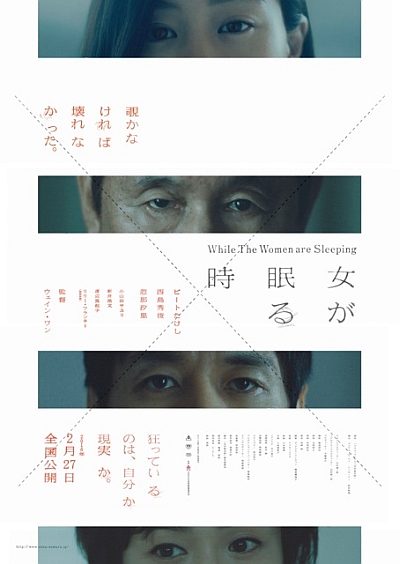
©2016 wtwas production committee
Posted by Karen Severns, Friday, February 26, 2016
Media Coverage
- Wayne Wang y Javier Marías aterrizan en el cine japonés
- 『女が眠る時』外国特派員協会会見に忽那ら
- 忽那汐里、ビートたけしとの年の差カップルを演じた感想を語る
- 忽那汐里、ビートたけしの素顔は「寡黙」と明かす『女が眠る時』で恋人役
- 忽那汐里、ビートたけしに産毛を剃られる
- 「女が眠る時」会見、忽那汐里がビートたけしとの撮影で「自信をもらえた」と明かす
- 忽那汐里がベルリンから凱旋!映画『女が眠る時』
Read more
Published in: February
Tag: Wayne Wang, Yukie Kito, Shioli Kutsuna, Sayuri Oyamada, Makiko Watanabe, voyeurism, international coproduction, Berlin Film
Festival
Comments

